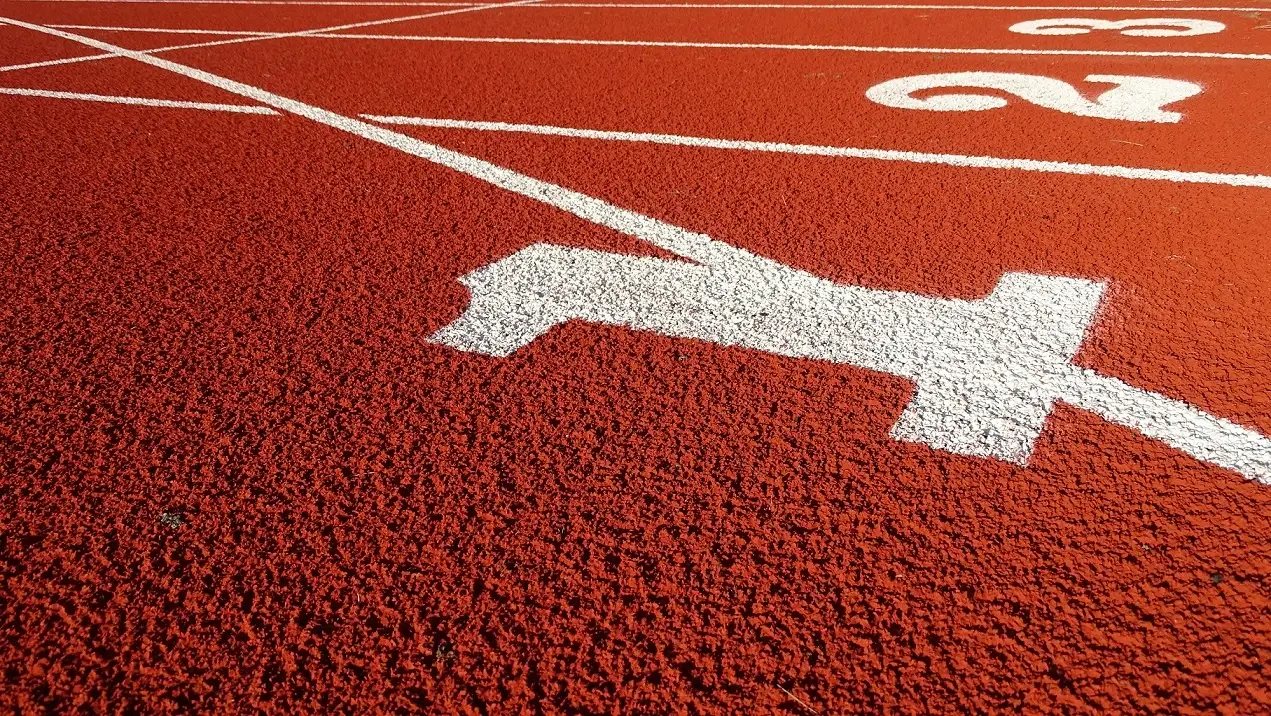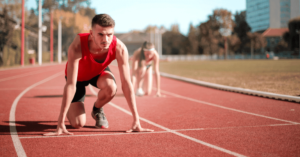Do you have a plan to put in a running track? Runners’ performance will drastically change depending on the surface you choose to put them on. The track has the potential to affect one’s speed, balance, and even technique. It’s also important to have a safe running surface installed for runners to use.
When installing a running track for the first time, it might be difficult to decide which different types of running track surfaces to use because there are so many options, each with its own set of pros and cons. The finest running track surface for your needs can be found by following the advice in this blog.
What Makes a Good Track Surface for Runners?
Here are the numerous options for running track surfaces, along with their advantages and disadvantages, to help you make the right decision:
Ground Cinders, Grass, and Clay
Natural running track surface materials like cinder and clay are frequently used for track surfaces. Grass is sometimes used as well.
Pros
- These surfaces are easy on the feet when running and inexpensive to put in.
- Joint stress for runners will be lessened on certain surfaces.
- These surfaces reduce the risk of injury because of the excellent cushioning they provide.
- There is increased friction when compared to other surfaces. Legs will have to exert more effort as a result. It improves running form and technique by building stronger foot muscles.
Cons
- After it rains, these surfaces are completely worthless.
- They require constant attention and are expensive.
- Surfaces made of synthetic rubber
Synthetic Rubber Surface
Synthetic rubber is commonly used for running tracks because it gives excellent traction and performance.
Latex track surfaces and polyurethane track surfaces are the two most common varieties of this sort of running track.
The cushioned comfort of a latex track surface makes it more pleasant to run on. It improves runners’ speed, endurance, and overall performance. It is permeable and a security net at the same time. Polyurethane track surfaces, on the other hand, are elastic and can resist extremely cold or hot weather without deforming.
The surface makes running easier, which lessens the likelihood of injury. Firmness contributes to increased velocity and steadiness. Polyurethane flooring makes for a waterproof track.
Pros
- The quick and effective track that synthetic surfaces create is advantageous to runners.
- Its high level of stress absorption and cushioning makes it safer to use.
- It cushions falls, eases the strain on your muscles, and helps your legs work more.
- It’s built to last, with a potential lifespan of 20 years or more. The low upkeep of synthetic flooring is another perk.
Cons
- There are a lot of little things to take care of during the first installation of synthetic rubber surfaces. It requires careful preparation.
- An initial flat base surface of gravel or crushed stone will need to be created for drainage purposes.
- Asphaltic flooring
- All-weather surfaces are another name for asphalt-bound surfaces. Blends of asphalt, rubber, and sand make up these materials.
Asphalt Surfaces
Asphalt-bound rails are still frequently used, although construction has slowed since the material is expensive and the surface is unreliable.
Pros
- The asphalt-covered rails will last a long time.
- Runners can go fast and have a good pace on the courses.
Cons
- Asphalt-based paths soften in the summer heat and harden in the winter cold. Asphalt, over a period of time, becomes hard and loses its elasticity. Injuries to runners’ joints and muscles are common on old tracks.
- The price tag is high.
What should the ideal surface of the running track be?
What matters most are your needs and price range. Synthetic tracks are the best option if you require a professional-level running track and have the money for one. After setup, it provides outstanding ease of use, reliability, speed, and performance. With synthetic surfaces, you can make your sports and recreation area safer for everyone.
Conclusion
The caliber of the running track surface you choose will have a significant impact on the performance of your runners. The functionality and longevity of the running track, as well as the safety of the runners, will all be improved.
Get the answers to the important questions we’ve outlined above before making your final decision. Then, choose among the many running track surfaces available. When installing a running track, be sure that both safety and performance are top priorities.





